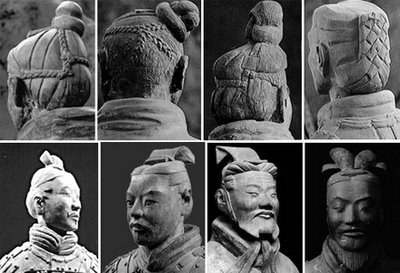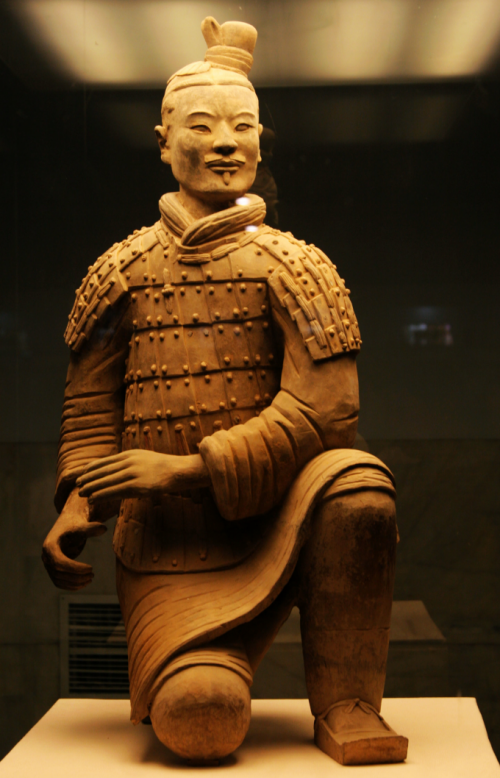The 2000 Year Old Army
The human body is a vessel of infinite beauty and mystery. We still struggle to understand it today. As centuries go by we can trace our depiction of the human body from rudimentary imitations to extreme realism to abstract and surrealism and beyond. Over 2,000 years ago in China, Qin Shi Huag had himself buried in a tomb with thousands of life-sized clay and bronze soldiers, horses and chariots. A monument to the Qin Dynasty.
The Terra Cotta Army is a realistic portrayal of humans. The way each body is formed is not as stoic and expressionless as the archaic sculptures of ancient Egypt and early Greece. It is without the exaggerated beauty and idealized perfection of Greek sculptures from the Classical age. The Terra Cotta soldiers are real and arranged in formations, as they would have been in life. This arrangement, however, limits the scope of how the soldiers can be portrayed, military postures being naturally rigid. In addition to this, all the soldiers are wearing armor therefore it is impossible to discern any muscles or joints. Despite these constraints, all of the statues conform to a painstaking attention to detail. Each soldier varies from the next in such a way that it was believed that the sculptures were modeled after actual soldiers in Emperor Qin Shi Huang’s personal guard.
Upon further examination, though, it has been determined that each figure adheres to one of eight basic facial types, probably due to a limited number of molds. These faces could have been changed by hand and sculpted to give each soldier a distinctive look, which accounts for the diversity among them. Kesner, a specialist from Prague, writes that “the goal was to produce the appearance of individuality, without its substance, realism without portraiture.”
Some authors argue that it was the sculptors’ goal to create an army that expressed the ideal of a perfect, uniform, and disciplined army where all soldiers were part of a whole, cogs in a well-oiled machine, where they would work together in perfect harmony. Although the individual has been debased in favour of the whole, attention is still given to every detail of each soldier; from the knotted hair all the way to the stitching on the boots or sandals, much in the same way that a car is comprised of very specific and detailed parts.
In the image below, an archer kneels and it is clear that his weight rests solidly on his right leg. It is evident that great care was taken into the detailing of the soldier as we can clearly see the folds on the sleeves of his arms and the arch of his back as he turns slightly to the right, his left arm on his left thigh.

There was no lack of attention to the detail in each piece. The human body, whether it be a soldier, a general or a labourer, was viewed as part of a whole, a cell in a greater collective. It is not Michaelangelo's self obssesed "David". This great collective imagery of the human body, or bodies, reminds us all to well of the colective spirit in which much of China sees itself. A part of something larger and more impressive than the individual.

Comments
mike f
November 12, 2012After reading your article I was pleased to see a new way of seeing the warriors. They are not just statues of man but a new understanding of how man looked. I have personally gone to see the “earth” warriors and am very happy to see that they are not being forgotten by our future generations. I hope you can experience them for yourself one day and truly see the very details you speak of.
You have to be registered and logged in in order to post comments!